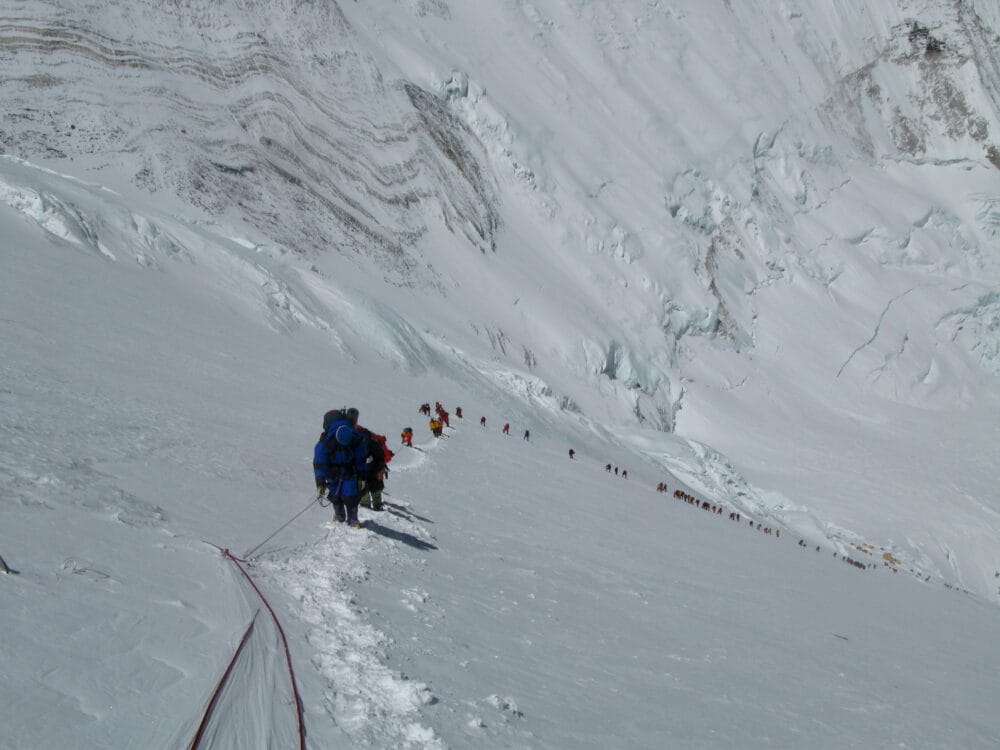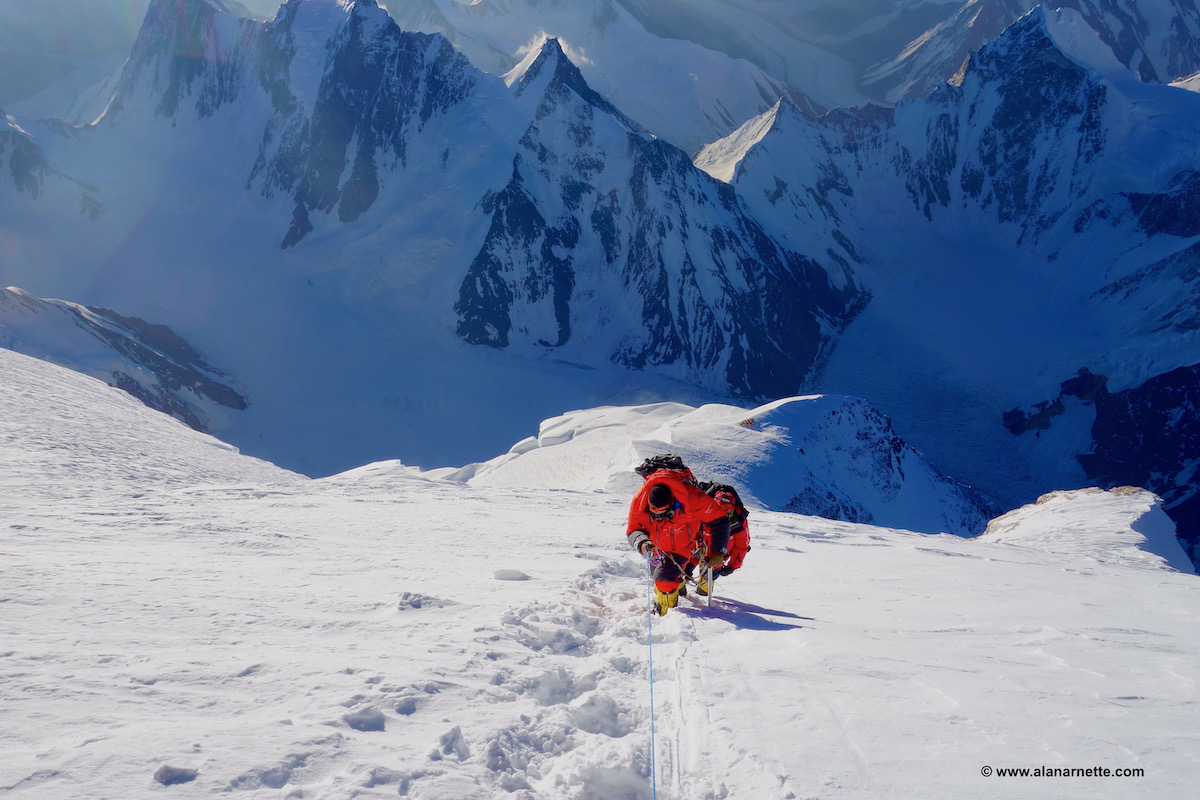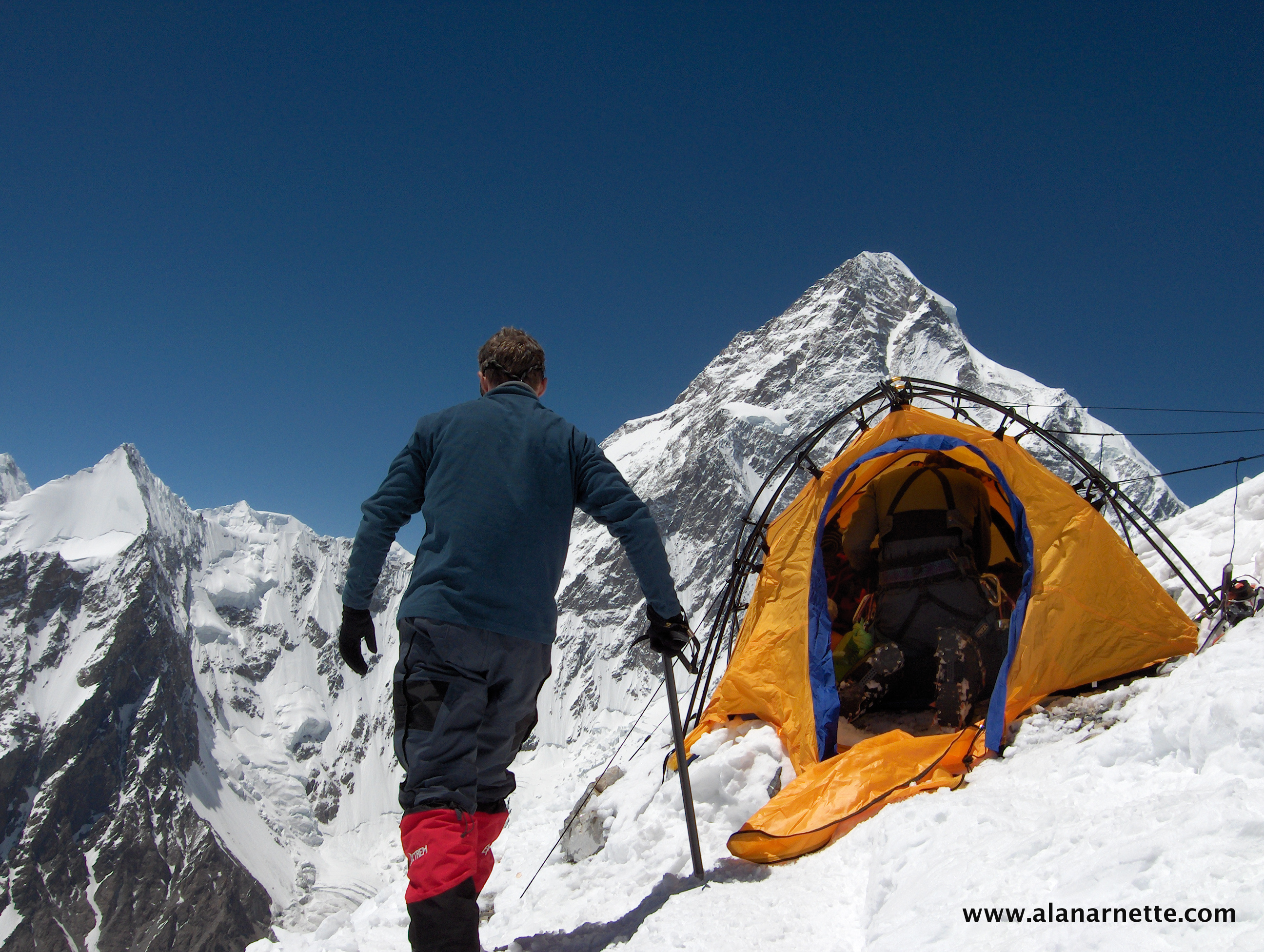Teams are filling up with Everest aspirants from around the world. I estimate there will be around 600 foreign climbers, supported by 900 Sherpas, taking the total to 1,700 people on the Nepal side and 100 foreigners, with 100 support climbers, on the Tibet side. During the Spring 2024 Everest season, look for a whopping 1,900 people from base camps to the summit. Let’s hope for an extended period of good summit weather (winds under 30 mph/48kph) to let them spread out.
With a recent summit success rate of around 60%, we can expect about 1,140 summits, with Sherpas accounting for half the total. This would smash the 2019 record summit total of 877, comprising 661 from the Nepali side and 216 from Tibet. Nepal issued a record 478 permits to foreigners in 2024. As usual, the Nepali teams will dominate the mountain.
Several factors are driving this significant growth. The Everest climbing permit fee will go from $11,000 to $15,000 in 2025; thus, many people are trying to beat the price increase. Then, most Nepali operators compete on price, offering expeditions for as low as $30,000 compared to Western companies at $75,000 or higher. This is attracting a new demographic previously priced out of the market. Finally, Everest has an insatiable lure … simply put, it’s the highest mountain on the planet, and operators have tamed it by using high levels of supplemental oxygen, generous Sherpa support, and climbing the same route each year to reduce the unknowns. All that said, last year, we saw a record eighteen people die while climbing Everest. I estimate that at least eleven were avoidable.
Another change for 2024 is the reopening of Tibet’s side by China. They closed it to foreign operators in 2020, allowing only Chinese nationals to climb. Last year, they said it was open, but it took so long to complete the visa process no foreigners climbed Everest from the Tibet side for the fourth year. So, with great excitement, operators like Adrian Ballinger’s Alpenglow, who climbs from the Tibet side only, will be back this spring. We can also expect long-time operators like Kobler & Partner, Furtenbach Adventures, Seven Summits Treks and Climbalaya to climb there. China also made it clear their stance that they require all climbers to use supplemental oxygen. This will certainly upset the professionals as most feel its fair means to climb without Os and cheating to use Os.
While there is always room for double-counting or exaggeration, we have a rough idea of how big the teams will be. Let’s start with Seven Summit Treks, SST, the dominant operator for all the 8000-meter mountains. They gave this update:
So far this season, SST has confirmed bookings of 65 climbers for Everest, which is the leading figure in the Nepali adventure industry. SST is all set to organize expeditions in all 8000ers of Nepal (Everest, Kanchenjunga, Lhotse, Makalu, Dhaulagiri, Annapurna) and Tibet, except Manaslu, which is an autumn climb.
The Himalayan Times surveyed some operators and found that 328 foreigners have signed up thus far. Remember that one and a half Sherpas climb with each foreigner on average, so these are just the foreigners. Some teams are not confirmed, so I put an “e” by their name for expected.
Nepali Operators on the Nepal Side – Southeast Ridge
- 8k Expeditions – 45
- 14 Peaks Expeditions
- Asian Trekking – 25
- Beyul Adventure – 5
- Elite Expeditions – 20
- Everest Parivar Treks – 10
- Expedition Himalaya – 7
- Glacier Himalaya Treks – 16
- Himalayan Ascent – 9
- Himalaya Vision Treks – 2
- Imagine Nepal – 35
- Kaitu Expedition – 7
- Makalu Adventure – 8
- Mountain Experience – 8
- Satori Adventures – 9
- Shangri-La Nepal Treks – 10
- Snowy Horizon – 8
- Peak Promotion – 5
- Pioneer Adventures – 27
- Seven Summit Adventure – 15
- Seven Summits Treks – 65
Nepali Operators on the Tibet Side – Northeast Ridge
As for foreign teams, we will see the usual suspects. The numbers are my rough estimates based on their recent Everest expeditions. It totals 227 foreign members.
Western Operators on the Nepal Side – Southeast Ridge
- 7 Summits Club – 30
- Adventure Consultants – 10
- e Adventure Peaks – 10
- Alpine Ascents International – 7
- Altitude Junkies – 10
- e Benegas Brothers – 5
- Climbing the Seven Summits – 28
- International Mountain Guides – 35
- Furtenbach Adventures – 22
- Jagged Globe – 10
- Kobler & Partner – 10
- Madison Mountaineering – 25
- e Mountain Madness – 5
- e Mountain Trip – 5
- e Rainier Mountaineering Inc. – 5
- Summit Climb – 10
Western Operators on the Tibet Side – Northeast Ridge
- e Adventure Peaks – 10
- Alpenglow – 10 (only on the Tibet side)
- Furtenbach Adventures – 18
There are another 100 people with Lhotse permits; many will also attempt Everest, and 35 for Makalu. I expect another 15 to 20 for Nuptse.
Best Laid Plans …
As I mentioned in the last post about the new rules around mandating WAG bags and a “GPS Chip” to track climbers, “I have serious doubts whether both new rules will be enacted this year or ever.” As I thought, the GPS Chip is, in fact, the RECCO reflector system and has nothing to do with GPS or a chip. See my description of what it really entails.
And as for those luxuries, well, authorities backed off that one as well, allowing for larger dining and sleeping tents but drawing the line on massage tents!
Another new rule banned helicopters from taking gear to Everest Base Camp. Well, that one will also not happen because, as it turns out, the operators have so much stuff, and there are not enough yaks, mules, horses, or porters to get everything there in time. We’ll see if the WAG bags are really used. Again, I have my doubts.
Best of luck to all who are climbing this season. Stay safe and come home.
Climb On!
Alan
Memories are Everything
The Podcast on alanarnette.com
You can listen to #everest2024 podcasts on Spotify, Apple Podcast, Breaker, Google Podcasts, Pocket Casts, RadioPublic, Anchor, and more. Just search for “alan arnette” on your favorite podcast platform.
Preparing for Everest is more than Training
If you dream of climbing mountains but are not sure how to start or reach your next level, from a Colorado 14er to Rainier, Everest, or even K2, we can help. Summit Coach is a consulting service that helps aspiring climbers throughout the world achieve their goals through a personalized set of consulting services based on Alan Arnette’s 30 years of high-altitude mountain experience and 30 years as a business executive. Please see our prices and services on the Summit Coach website.






23 thoughts on “Everest 2024: Who’s Climbing This Year?”
Congratulations to all climbers summited in spring 2024.
Hi, has anyone climbed up one side and down the other?
Yes. 35 traverses but you must have a climbing permit from both Nepal and China and China no longer issued them. There have been a few illegal traverses with the person claiming it was for safety/medical reasons.
Is Raj Sura climbing Mount Everst, this May 2024?
Thank you Alan. I appreciate you taking the time to explain
Hi Alan,
I have always wandered which ‘side’ is considered more difficult and why. Is one side more or less technical or the topography just makes one side easier/harder?
In general, both sides offer challenges and are roughly equivalent. However, the Tibet side is usually colder and windier, and there is more climbing on rocks with crampons, which is harder than on snow. Most people will say the Tibet side is more technical for these reasons. Also, Tibet is less crowded by over half. I estimate 100 clients on that side compared to 600 on the Nepal side. The Nepal side is considered more dangerous primarily due to the Khumbu Icefall. However, more people have died higher on that side than in the Icefall. The death of 16 Sherpas in 2014 and three last year in the Icefall give the impression that it is a danger zone, which is to some extent.
The Nepalese side has seen 8,350 summits with 217 deaths through January 2024 or 2.8%, a rate of 1.14. The Tibet side has seen 3,646 summits with 110 deaths through January 2024 or 3.0%, a rate of 1.11.
Hi Alan – I have a burning question I have always wanted to ask you…do climbers moving up from the south and north sides ever ‘meet’ at the top at the same time?? Cheers for your excellent work
Yes! When I summited we were a group of four leading the entire push so I was expecting it to be just us on the summit. To my surprise, there were several other people already on the summit. It took me a few moments to figure out that they came from the North(Tibet) side!!! You only meet on the true summit.
Are you sure about this? It makes zero sense that they would NOT allow the use of supplemental oxygen; I thought only idiots and unicorns did that already, anyway. So you’re saying everyone climbing from Tibet will NOT be using supplemental oxygen? They’ll climb all the way to the summit WITH NO supplemental oxygen? I think you’re perhaps confused.
Sorry if there is confusion but China requires everyone to use supplemental oxygen.
Hi Alan, Thank you for your great reporting as always. I wonder if there ever is a conflict regarding camp sites in base camp? I mean, does each operator get to decide where they want to be or are they assigned sites? I’ve always wondered how that works 🙂 Best regards from Stockholm, Sweden
Usually commercial teams send a few Sherpas to EBC site in early March to “mark” where they will put their camp. Teams usually take the same each season and everyone respects the choices.
Aha, great that it is conflict-free! Thank you for replying!
Are you saying China is against climbing with supplemental oxygen or banning climbers who choose not to use it?
China issued a new rule saying that using supplemental oxygen is required for all climbers. I don’t know what would happen if someone was found high on the mountain not using it. I assume “escorted” back to base camp and driven to the Lhasa airport to leave China. But this is new so we don’t know.
What is the purpose of this rule though? It seems like this will only increase deaths and decrease the number of people who will climb on the Tibet side.
Stats from the Himalayan Database show a higher death rate of climbers climbing without supplemental oxygen. I assume China feels this rule will reduce deaths.
You’ve twice said it backwards; once in the article and once in your first reply to this comment; hence the confusion.
Nice coverage. Thanks Alan. Sorry to hear about David Breshears.
Thank you Tony. Yes, David is a lost for the community.
There’s money to be made! Almost a gold rush to the next fields of riches. Who will succeed? Yes, I do clime. Madness! JSN
Ah yes, the new Disneyland in the sky !!!!! The best amusing ride, the death zone
Comments are closed.